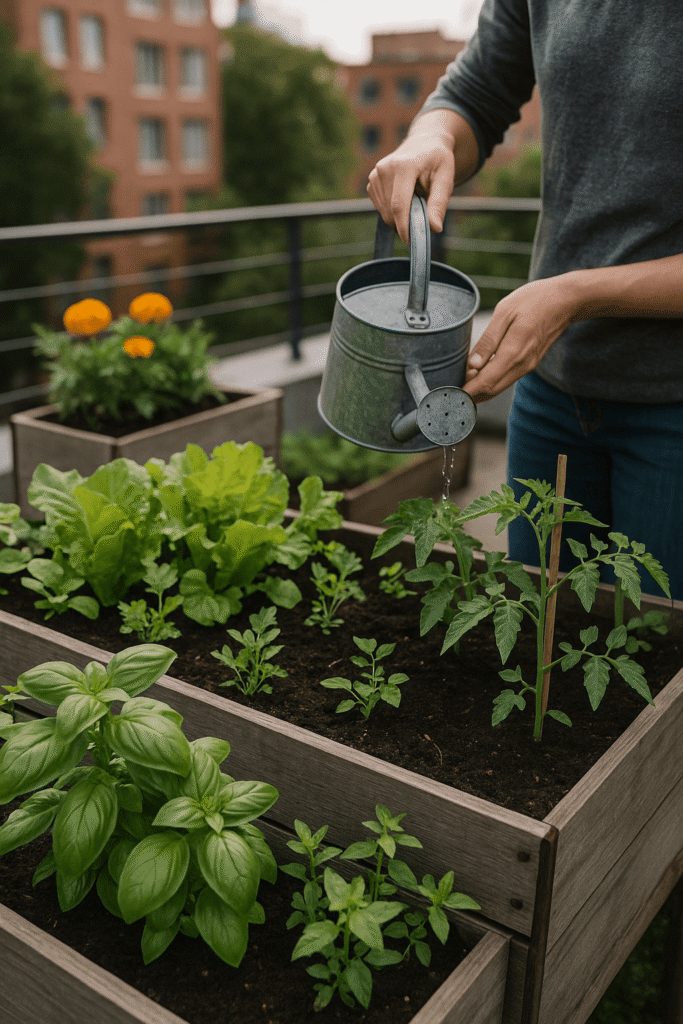Let’s be real—climate change feels overwhelming, right? But here’s the underrated truth: urban gardening is one of the simplest yet most powerful ways to fight back, especially if you live in a concrete jungle.
Urban gardening is not just about adding greenery to your balcony. It’s a lifestyle shift that helps reduce your carbon footprint, lowers stress, and even puts fresh food on your plate. Whether you’re a complete beginner or someone who’s just curious, this guide will help you start your urban gardening journey without the overwhelm.

Urban gardening refers to growing plants in cities where space is limited. Think balconies, rooftops, patios, windowsills, or even vertical wall planters. This isn’t a new trend—it’s a growing global movement to make cities greener, healthier, and more self-sufficient.
As cities expand, people are turning to urban gardening as a way to reclaim space, grow their own food, and live more sustainably. It’s practical, affordable, and—let’s be honest—makes your apartment look amazing.
Let’s break this down: Why should you care?
Growing your own food reduces the need for long-distance transportation, plastic packaging, and chemical-heavy farming. Plants absorb CO₂ and improve air quality—your balcony can literally clean the air.
In uncertain times (hello, pandemic flashbacks), having access to homegrown veggies and herbs gives you a serious advantage.
Gardening has been shown to reduce anxiety, improve focus, and boost mood. Touching soil can literally reset your nervous system. No, really.
You’ll eat healthier, spend less money, and maybe even spark a new hobby that feels way more rewarding than binge-watching another series.
Ready to dig in? Here’s your starter pack.
Containers (pots, recycled bottles, crates)
Soil or potting mix
Seeds or seedlings
Watering can or spray bottle
A sunny spot (minimum 4–6 hours of sunlight)
Herbs: Mint, basil, coriander
Leafy greens: Spinach, lettuce
Fruits/veggies: Tomatoes, chilies, beans
Overwatering (plants drown too!)
Using containers without drainage
Placing plants in dark corners
Choosing hard-to-grow plants first
Water early morning or late evening
Rotate pots weekly for even sunlight
Remove dead leaves regularly
Use kitchen waste to make compost
If your space is smaller than your motivation, don’t stress. You’ve got options.
Vertical gardening: Stack planters or hang them on walls
Window planters: For herbs and flowers
Hanging pots: Great for herbs or even strawberries
DIY solutions: Reuse tins, plastic bottles, old buckets
Pro tip: Use mirrors behind plants to reflect more light and make your space look lush af.
If you’re doing this, might as well do it right.
Compost kitchen scraps: Veggie peels, eggshells, coffee grounds
Use rainwater: Set out a bucket during monsoon
Natural pest control: Neem spray, garlic water, chili powder
Avoid synthetic fertilizers: They damage your soil and health
Remember, urban gardening isn’t just about what you grow—it’s about how you grow it.
From food shortages to rising temperatures, cities are in desperate need of more greenery. Urban gardening isn’t a side hustle—it’s the next-gen survival skill. The best part? You don’t need to be rich or a professional. All you need is a pot, a seed, and the will to grow.
Urban Gardening is the quiet revolution we all need.
You don’t need acres of land or fancy tools. Just a small corner, some sunlight, and the desire to make a difference.
So, what are you waiting for? 🌱
Plant that seed. Share your progress. Tag it with #GrowGreen and inspire others to start their own garden revolution. Your plant babies—and the planet—will thank you.